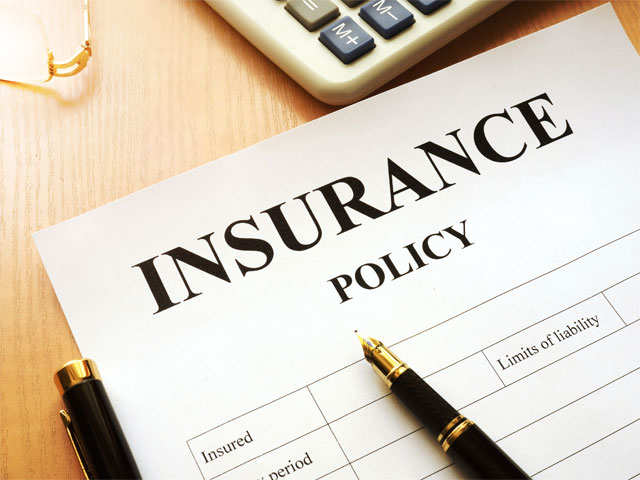
Insurance policies are a crucial part of modern life, offering financial protection and peace of mind. Whether it’s your home, health, car, or business, the right insurance policy can shield you from unexpected risks and provide a safety net in times of need. But what exactly is an insurance policy? How do you know if you’re choosing the right one for your needs? In this blog, we’ll break down what an insurance policy is, how it works, and key things to consider when selecting one.
What is an Insurance Policy?
An insurance policy is a legal contract between you (the policyholder) and an insurance company. In this contract, the insurer agrees to provide financial protection or compensation against certain risks in exchange for regular payments known as premiums. These premiums are typically paid monthly, quarterly, or annually.
The policy outlines what risks or events are covered, the exclusions (what’s not covered), and the terms under which the insurance company will provide compensation. The amount of coverage, the deductible (the amount you pay out of pocket before insurance kicks in), and the premium costs are all specified in the policy.
Key Components of an Insurance Policy
Understanding the basic components of an insurance policy is essential for making an informed decision. Here are the key terms you should be familiar with:
1. Premium
The premium is the amount you pay to the insurance company in exchange for coverage. The amount can vary based on several factors such as the type of insurance, the level of coverage, your location, and even your age and health. Premiums can be paid monthly, quarterly, or annually.
2. Policyholder
The policyholder is the person or entity (like a business) that owns the insurance policy and is entitled to the benefits or payouts in case of a covered event. The policyholder can also be the insured person (though sometimes they may not be, like in life insurance where the policyholder may not be the person insured).
3. Coverage
Coverage refers to the types of risks and events the policy will protect you against. For example, a home insurance policy might cover damage from fire, theft, or storms. Different policies offer different levels of coverage, so it’s important to understand what’s included and excluded.
4. Exclusions
Exclusions are the risks or events that are specifically not covered by your insurance policy. For example, many health insurance policies don’t cover elective procedures, while some car insurance policies exclude damage caused by natural disasters. It’s important to read the exclusions carefully to avoid misunderstandings later.
5. Deductible
The deductible is the amount you must pay out of pocket before the insurance company starts paying for a covered claim. For instance, if your car insurance policy has a $500 deductible and you file a claim for $3,000, you’ll pay the first $500, and the insurer will pay the remaining $2,500.
6. Policy Limits
The policy limit is the maximum amount that the insurance company will pay for a covered claim. For example, a homeowner’s insurance policy might have a limit of $250,000 for property damage. If the damage exceeds that amount, the policyholder is responsible for the difference.
7. Beneficiary
In life insurance policies, a beneficiary is the person or entity that will receive the death benefit upon the policyholder’s death. Beneficiaries are typically family members or other loved ones, but they could also be charitable organizations or businesses.
Types of Insurance Policies
There are many types of insurance policies, each designed to protect against specific risks. Some of the most common types include:
1. Health Insurance Policies
Health insurance covers the cost of medical care, including doctor visits, hospital stays, prescription medications, and surgeries. It can be offered by employers or purchased privately. There are various plans, from comprehensive health plans that cover a wide range of services to more limited plans, such as catastrophic health insurance.
2. Life Insurance Policies
Life insurance provides a financial payout to your beneficiaries in the event of your death. It helps replace lost income, pay off debts, and provide for your loved ones. There are two main types:
- Term life insurance: Provides coverage for a specific period (e.g., 10, 20, or 30 years).
- Whole life insurance: Provides lifelong coverage and often includes an investment component.
3. Auto Insurance Policies
Auto insurance covers the cost of damages to your car or other vehicles, as well as injuries resulting from car accidents. Coverage can include:
- Liability coverage: Pays for damage or injury you cause to others.
- Collision coverage: Covers damage to your own car in a crash.
- Comprehensive coverage: Protects against non-collision-related incidents, such as theft or natural disasters.
4. Homeowners Insurance Policies
Homeowners insurance covers damage to your home and belongings due to incidents such as fire, theft, vandalism, or weather-related events. It also offers liability protection if someone is injured on your property.
5. Business Insurance Policies
Business insurance helps protect companies from various risks, such as property damage, liability claims, and employee-related issues. Types of business insurance include:
- General liability insurance
- Commercial property insurance
- Workers’ compensation insurance
6. Travel Insurance Policies
Travel insurance protects against unexpected events that can disrupt your travel plans, such as trip cancellations, medical emergencies, and lost luggage. This type of policy is particularly useful for international trips or expensive vacations.
How to Choose the Right Insurance Policy
Choosing the right insurance policy involves understanding your needs and risks, comparing options, and selecting coverage that offers the best protection at an affordable price. Here are some steps to guide you:
- Assess Your Needs: Determine what risks you need to protect against. For example, if you own a home, homeowners insurance is a must. If you’re self-employed, business insurance may be essential.
- Compare Quotes: Get quotes from several insurance companies to compare premiums and coverage options.
- Understand the Policy Terms: Read the policy carefully to understand what is covered, what’s excluded, and the policy limits. Don’t hesitate to ask questions if something is unclear.
- Consider the Insurance Company’s Reputation: Look at customer reviews, financial stability ratings, and customer service offerings to choose a reliable insurer.
- Review Your Coverage Regularly: Life circumstances change, so it’s important to periodically review and update your insurance policy to ensure it continues to meet your needs.
Conclusion
An insurance policy is more than just a piece of paper—it’s a tool that helps you manage risk and protect yourself from unexpected financial setbacks. By understanding the key components of insurance policies and selecting the right coverage for your needs, you can ensure that you are prepared for whatever life throws your way.
Always read the fine print, ask questions, and don’t rush the process. An informed decision today could save you a lot of stress and financial hardship in the future.

